|
The Hennepin County Plastic-Free Challenge is a month-long effort starting January 20 to reduce plastic consumption, especially single-use plastics, in ways that fit best in your lifestyle and are most impactful to reducing your footprint.
Kicking off the New Year with the Plastic-Free Challenge is a great way to adopt new habits that will help you set and keep resolutions to lower your impact on the environment.
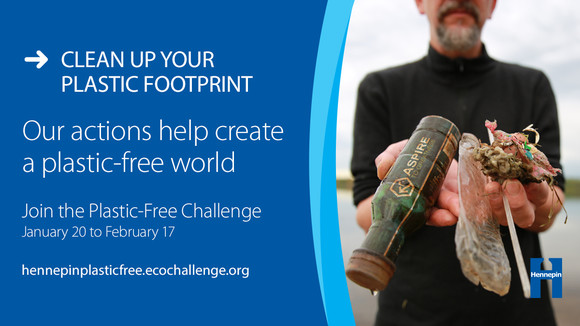
Our actions help create a plastic-free world
Although plastic is a versatile material with many uses, it is also concerning because it presents health risks, contributes to litter and pollution, and is challenging to dispose of. Some of the most common and problematic plastic items we deal with every day come in the form of packaging and single-use plastics. Since these items are used for a short period of time and then discarded, they contribute significantly to the increasing amount of plastic waste.
There are many simple changes you can make that will add up to a big impact – using reusables, skipping plastic straws, saying no to plastic bags, understanding your plastic footprint, avoiding plastic packaging, and much more. The online Plastic-Free Challenge has more than 60 of actions you can choose from in seven categories.
Join now and invite your family and friends to join you
The challenge runs January 20 to February 17. Once you sign up and create your profile, you can browse the categories and actions, check off the actions you already take, and select up to five one-time actions and five daily actions to make progress on during the four-week challenge.
You can also create or join a team to take the challenge along with family, friends, neighbors, and colleagues. Or join the community team and connect with participants throughout Hennepin County.
Each year, we reflect back on the work we accomplished and progress we made in collaboration with our residents, businesses, and partners to protect the environment. Although 2020 was a challenging year, we were proud to be able to continue offering important in-person services, pivot to virtual offerings, meet the needs of our community, and make progress on many priority initiatives.
Continuing important in-person services
Ensuring proper disposal of hazardous waste and supporting the operation of the solid waste system
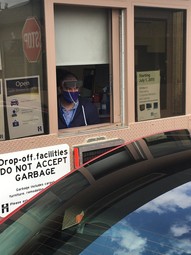
After being shut down for parts of March and April, the drop-off facilities, which provide proper disposal for household hazardous waste and problem materials, reopened with changes in operations to ensure health and safety. With many people doing house projects and cleaning out their homes this year, the drop-off facilities received a record number of visitors in the fall who dropped off more waste per person than average.
The hazardous waste collection events we were able to hold – at sites large enough to ensure proper distancing – were similarly busy. The two events had nearly 1,800 residents dropping off over 110,000 pounds of waste, or 62 pounds per resident.
This essential work was supported by call center staff, who handled more than 22,500 calls, totaling about 600 hours responding to resident questions.
In addition to disposal services for residents, operations continued without pause at the Brooklyn Park Transfer Station and the Hennepin Energy Recovery Center. These facilities are vital in keeping the solid waste system operational.
After a pause in conducting inspections due to COVID-19 restrictions, hazardous waste inspectors, who work with businesses to ensure they are properly managing hazardous waste to protect the environment, conducted more than 200 routine site inspections and additional site visits.
Planting trees and conducting natural resources site visits
|
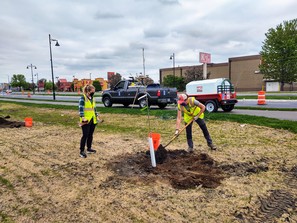
County foresters planted 373 trees in 10 locations. Since the foresters were not able to do large community volunteer planting events this year, they worked with Sentencing to Service forestry crews and recruited volunteers from other Environment and Energy work areas to help with the plantings. Because staffing and volunteer restrictions meant that Hennepin County foresters were not able to plant all of the trees grown in the county’s gravel-bed nursery, they also distributed 365 trees to 11 cities and two schools who then planted the trees in public spaces throughout the county.
After halting field work for a few months during springtime COVID-19 restrictions, natural resources staff conducted almost 200 visits to project sites or with county residents who had requested technical assistance on a water or natural resources related topic.
|
Going virtual
When restrictions went into place this spring, many of our programs pivoted to virtual offerings.
Promoting waste reduction and recycling
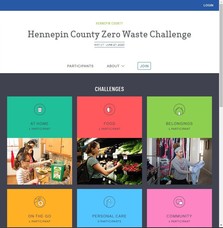
The shift was easy for the Zero Waste Challenge, since we already had online challenges in the works for 2020. The online Zero Waste Challenge and online Stop Food Waste Challenge engaged more than 600 participants in taking more than 2,800 actions. Common actions included decluttering, stopping wish-cycling, reducing junk mail, completing a waste audit, taking a food inventory, creating a weekly meal plan, establishing an eat first area in the fridge, and learning how to properly store food.
Spring and fall Master Recycler/Composter classes were offered online, enabling more than 80 new volunteers to complete the training course. An online summer refresher for current Master Recyclers had 75 attendees, including some participants who first completed their training in 2011!
|

Master Recycler/Composter volunteers have found creative and safe ways to volunteer this year, including helping ReuseMN to salvage plywood, labeling recycling carts for the City of Minneapolis, participating in food rescue operations, and educating their communities virtually.
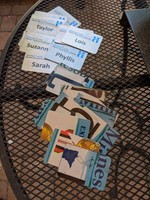
The Master Recycler program managers teamed up with a Fix-It Clinic volunteer to create upcycled nametags for the new volunteers by collecting and reusing old license plates.
When we had to cancel our monthly in-person Fix-It Clinics, we started offering one-on-one virtual repair assistance. The virtual option provided Fix-It volunteers the opportunity to help people repair larger items that can’t be brought into a clinic, such as a dishwasher and closet doors.
|
Conducting virtual inspections and reviews
Although some field work was still necessary, Hennepin County staff and wetland protection partners discovered that online meetings worked just as well or sometimes better to review planned wetland impacts and discuss options for minimizing or eliminating those impacts.
Hennepin County foresters offered virtual tree inspections with county facilities managers. Over a video call, foresters would assess tree issues and make recommendations for addressing the problem.
Hazardous waste inspectors conducted 14 virtual hazardous waste inspections, many of them at healthcare facilities that were limiting in-person activities.
Meeting community needs
The challenges of 2020 presented new and increasing needs in our community, and we shifted resources to help meet those needs.
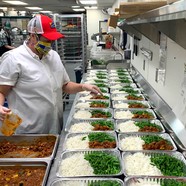
We provided $100,000 in funding to support the continued operation of Second Harvest Heartland’s Minnesota Central Kitchen. The program rescues food that would otherwise go to waste and uses it to provide meals to those in need while offering employment to kitchen and restaurant staff that would otherwise be out of work.
To help food shelves meet an unprecedented demand, we provided funding through our business recycling grants program for freezers and refrigerators to increase their capacity to rescue food. Three organizations were awarded grants that helped them expand their capacity to rescue more food and serve more families in need.
|

We partner with community groups through our Green Partners environmental education grants program to engage communities in learning about and taking action to protect the environment. Throughout the year, we supported grantees in shifting their project plans and outreach approaches, and, where needed, helped them extend their project timelines to give them more time to successfully work with their communities.
Following the civil unrest in Minneapolis, we reached out to businesses licensed through our commercial hazardous waste program who experienced damage to provide support and guidance on managing waste, and we conducted pre-demolition inspections on damaged properties to ensure waste was properly managed.
|
Making progress on priority initiatives
Even with all the disruptions this year, we were able to make significant progress on some new and priority initiatives.
Developing the Climate Action Plan
We developed a draft of the county’s Climate Action Plan with initiatives to reduce greenhouse gas emissions and strategies to adapt to our changing climate in ways that reduce vulnerabilities and ensure a more equitable and resilient Hennepin County.
The draft plan, which includes strategies identified by more than 50 county staff across all lines of business, will serve as the foundation for the county’s coordinated approach to planning, policy development, and responses to climate change once it is adopted in 2021. In the first round of public engagement, feedback was received from 80 public entity partners through online meetings, 84 community partners and youth through virtual feedback sessions, and 2,300 residents through an online survey.
Protecting natural areas

Conservation easements, which are a set of development restrictions a landowner voluntarily places on their land, are one of the most effective tools for permanently protecting natural areas on private property. Hennepin County and the Minnesota Land Trust are working together to protect 500 acres of habitat within Hennepin County and restore 250 acres to a more natural state, and the next 10 to 20 years are critical for protecting these areas before the land has been developed and the remnant habitats are gone.
As part of our efforts to protect and restore natural areas in the county, we established four new conservation easements totaling about 120 acres in Independence and Minnetrista. We also worked closely with the City of Eden Prairie to restore and enhance some of the last remaining native prairie in the Prairie Bluff Conservation Area and Richard T. Anderson Conservation Area.
|
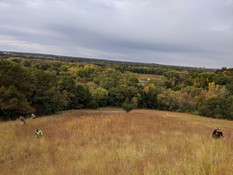
County and city staff collected seeds throughout the growing season from these prairies that will be spread in other areas the county is working to enhance. Local seed collection is critical to ensuring the success of habitat restoration efforts as well as to preserving the genetic diversity of native ecosystems.
To support this work going forward, we received $3.1 million in additional state funding from the Lessard-Sams Outdoor Heritage Fund, which is part of the Clean, Water, Land, and Legacy Amendment.
|
Salvaging building materials
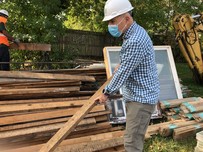
To reduce the amount of building materials going to landfills, we created resources and programs to encourage deconstruction of buildings rather than demolition, reuse of building materials from home improvement projects, and proper management hazardous waste from demolition sites. We are now partnering with 18 cities in the county to offer deconstruction grants and conduct pre-demolition inspections. We have supported building material salvage, reuse, and recycling in 19 projects through the deconstruction grants. Materials commonly salvaged include light and plumbing fixtures, cabinets, doors and windows, wood flooring, and dimensional lumber. Staff completed 95 in-person pre-demolition inspections and 97 remote document reviews.
Supporting reuse retailers and promoting buying used
|

The Join the Circle campaign was launched to support our Choose to Reuse program. We created articles that provide tips for buying used, and more than 300 residents pledged to buy used and signed up for Join the Circle resources and events. We also supported 18 retailers with training and resources in marketing and merchandising.
|

In 2008, Second Chance Recycling launched a mattress recycling program with start-up funding provided by the county. In November, the program hit a major milestone: 500,000 mattresses recycled! That’s over 40,000 mattresses recycled each year over the 12 years of the program, and it adds up to thousands of tons of steel, foam, wood, and cotton diverted from landfills.
Second Chance is able to recycle over 90 percent of the materials in a mattress:
|
- Steel springs are be made into new steel products
- Foam is recycled into new foam products such as carpet padding
- Wood is used as animal bedding
- Cotton is recycled into a filtration media used for things like oil filters for large equipment
Hennepin County and Second Chance Recycling have partnered on recycling and environmental services since the early 1980s. Second Chance is a Minneapolis-based nonprofit run by EMERGE that provides transitional employment opportunities for people with barriers to employment.
In recent years, the demand for the mattress recycling service has outpaced capacity, so the county recently provided $400,000 to Second Chance to expand processing capacity and improve efficiency. Recycling options for mattresses are currently limited due to COVID-19 restrictions. Find updates on the latest options on the Green Disposal Guide.

Forever Ware is a Minneapolis startup offering a new type of takeout container that you can borrow and return from restaurants and grocery stores in the Twin Cities. This helps to reduce the amount of disposable packaging that comes with takeout. Hennepin County awarded Forever Ware a business recycling grant to fund the initial purchase of their reusable fleet and get the program kicked off with local businesses.
Participating is easy – you pay a $5 deposit to have your takeout orders packaged in Forever Ware when you place your order in-person, over-the-phone, or online at participating businesses. When you're finished, return your container to any participating vendor to get your deposit back or swap your container for free with your next order.
Forever Ware is currently available at Butter Bakery Café, Namaste Café, and Roots for the Soul in Minneapolis. Sign up for updates to learn more and to find out when additional businesses are added. For new vendor announcements from Forever Ware of follow them on Instagram, Facebook, or Twitter. Interested businesses can contact info@foreverware.app.
School recycling grants
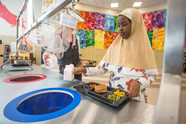
Applications for school recycling grants will be accepted starting in early January, and applications will be due February 25.
School recycling grants are available to public and private, K-12 schools in Hennepin County to start or improve programs to reduce waste and keep recycling and organic materials like food and non-recyclable paper out of the trash. Grant funding can be used to purchase equipment and supplies, including recycling and organics recycling containers, sorting stations, reusable food service ware, bulk condiment dispensers, organics hauling, and compostable bags.
|
Online information meetings about the grants will be held:
- Wednesday, January 27 from 3:30 to 4:30 p.m.
- Thursday, January 28, from noon - 1 p.m.
Register for an information meeting. For more information, contact Kira Berglund at kira.berglund@hennepin.us.
Aquatic invasive species prevention grants

Applications for aquatic invasive species prevention grants are due Thursday, January 14.
Funding is available for local government agencies, nonprofit organizations, institutions, and businesses in Hennepin County to implement projects that prevent the spread of aquatic invasive species. Grant funding can be used to address pathways of aquatic invasive species introduction, provide education, promote behavior change, implement early detection and rapid response efforts, and other ideas that prevent the spread of aquatic invasive species.
For more information, contact Tony Brough at tony.brough@hennepin.us or 612-348-4378.
|
Between packaging from deliveries, decorations, gift wrap, and more, the holiday season is a time when we often have a lot of stuff to get rid of. To make sure you recycle and reuse as much as you can, review the holiday disposal guide tips below for the best way to get rid of common holiday items.
Recycle at home
Boxes
This includes cardboard boxes, boxes from deliveries, shoe boxes, electronics boxes, and gift boxes.
Flatten before recycling. Check with your hauler for options if you have a lot of them.
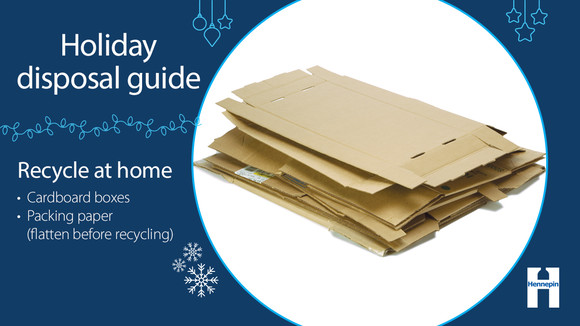
Paper
You can recycle packing paper, cards and envelopes made of plain paper, and newspaper, Kraft paper, or other plain paper used as gift wrap.
Flatten paper before recycling to ensure it gets properly sorted with the paper at the recycling facility.

Bring to a drop-off for recycling
Plastic bags, film, and bubble wrap
Deliveries can come with a lot of plastic packaging. You can bring shipping envelopes made entirely of plastic, plastic film, air pillows, and bubble wrap to a drop-off for recycling. Find drop-off locations at retail and grocery stores at plasticfilmrecycling.org. These items are also accepted at Hennepin County drop-off facilities.
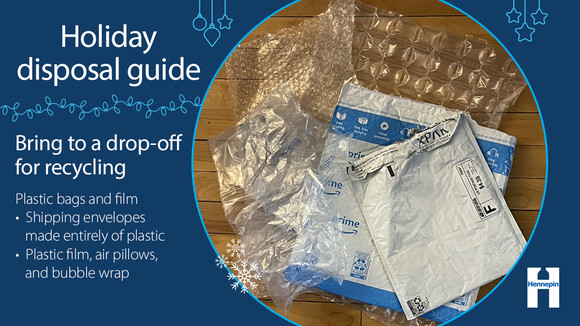
String lights, electronics, and batteries
It’s common this time of year to have things like string lights that no longer work, electronics that you are upgrading, or items with batteries that you need to get rid of. These items are accepted at Hennepin County drop-off facilities for recycling or proper disposal. Find options for disposing of common household items on the Green Disposal Guide.
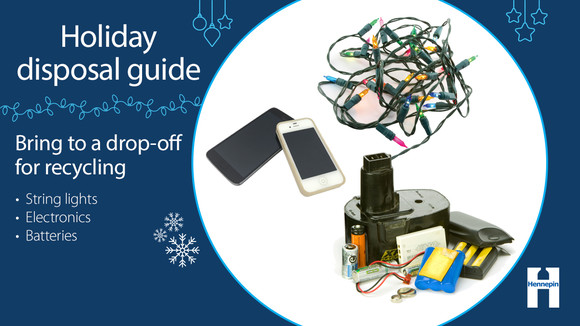
Special pick-up or yard waste site
Real Christmas trees, wreaths, and greenery
Check with your hauler or city as many offer special pickup options after the holidays. Or take these items to a yard waste site. Remove everything, including lights, ornaments, and tinsel, before disposing.
If wreaths and greenery are not accepted by your hauler, put them in a plastic bag and put in the trash. Unless you know your tree and greenery was grown in Minnesota, the Minnesota Department of Agriculture says you shouldn’t leave them in your backyard because of concerns about pests. Learn more about best practices for holiday greenery.

Trash
Gift wrap and decorations
Many items commonly used to decorate gifts go in the trash. This includes:
- Glossy, shiny, or glittery wrapping paper
- Tissue paper
- Bows and ribbons
- Cards that have glitter, foil, or plastic adornments
- Cards printed on photo paper
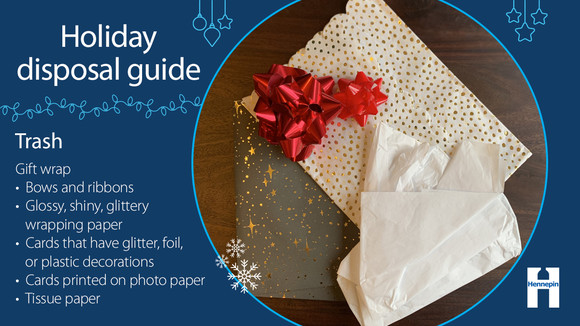
As you clean up during the holidays, items like gift bags, gift boxes, ribbons, and bows are great to save and reuse next year!
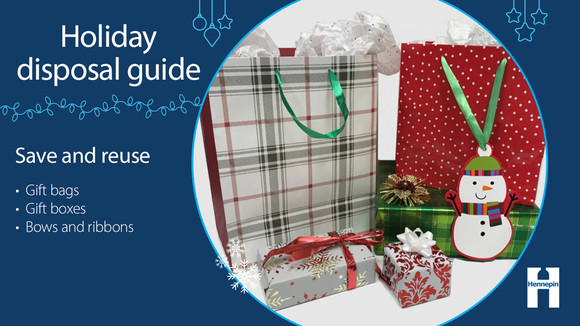
Packing materials
Styrofoam and shipping envelopes made of multiple materials (such as paper and bubble wrap) go in the trash.
Trees, wreaths, and greenery with flocking or glitter
Trees, wreathes, and other greenery that has flocking (a covering of artificial snow), glitter, or other decorations that cannot be removed should go in the trash.
Artificial trees and wreaths should be saved for reuse, or look for options to give them away or donate them.

|